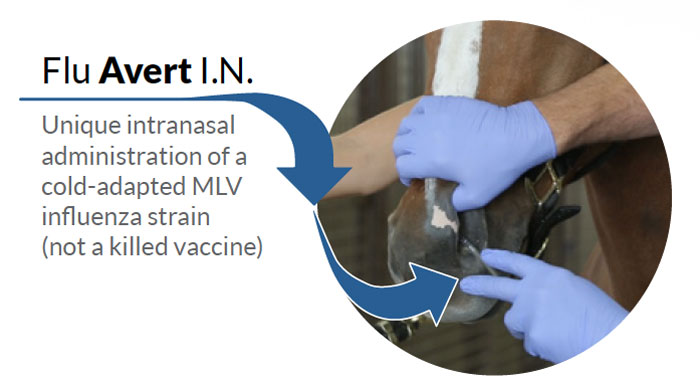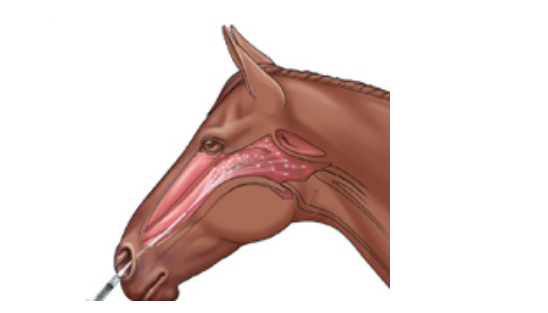
It is possible to immunize against the respiratory diseases equine influenza and equine strangles using intranasal vaccines. A specialized applicator is placed into a horse’s nostril and the vaccine is sprayed as a fine mist onto the mucosa (lining) of the respiratory tract. This technique is as close to simulating natural infection as possible by placing the antigen at the site where local immunity naturally develops.
Giving vaccine by intranasal route rather than injecting into a muscle eliminated the risk of sore muscles associated with injectable vaccines and stimulates local immunity.
Also, with the advent of intranasal vaccines, horse owners who are concerned about adverse reactions from intramuscular injections have an alternative to use to comply with competition requirements for influenza protection by USEF and FEI.
The intranasal equine influenza product uses an inch-long applicator to deliver the vaccine as a mist without much resentment by the horse, especially if the practitioner is experienced and confident. The mist covers a broad area of the mucosa lining the nose and pharynx similar to how a horse would acquire a natural infection. This modified-live, cold-adapted equine influenza vaccine confers rapid immunity within seven days following a single application. Boosters for intranasal influenza are recommended every six months.
However, if the objective is to stimulate an anamnestic (memory) antibody response in a mare to be passed through the colostrum to her foal, it is necessary to immunize the mare through the intramuscular route.
Caution must be taken when using the intranasal strangles vaccine. It is a modified live virus that possibly can cause abscesses in localized lymph nodes or at the skin surface if the vaccine contacts any breaks in the skin. It is recommended to only administer intranasal strangles vaccine after all other intramuscular injections or other injectable medications have been given. An alternative option is to come back another day and give it separately. Hands should be washed thoroughly and caution taken when handling the intranasal strangles vaccine.



